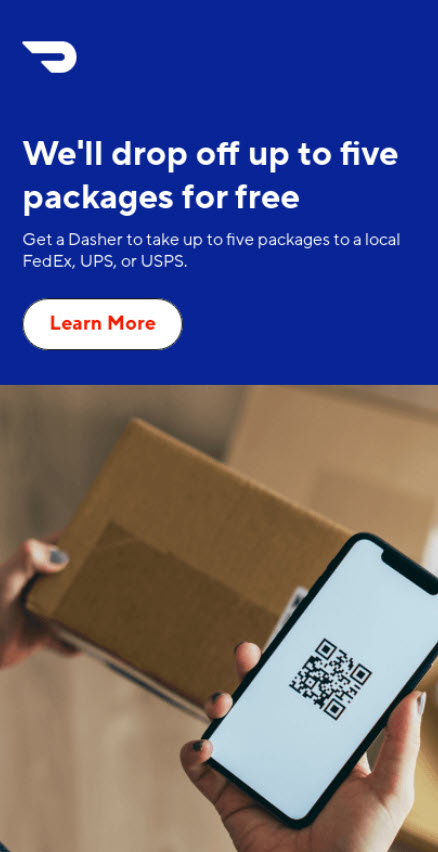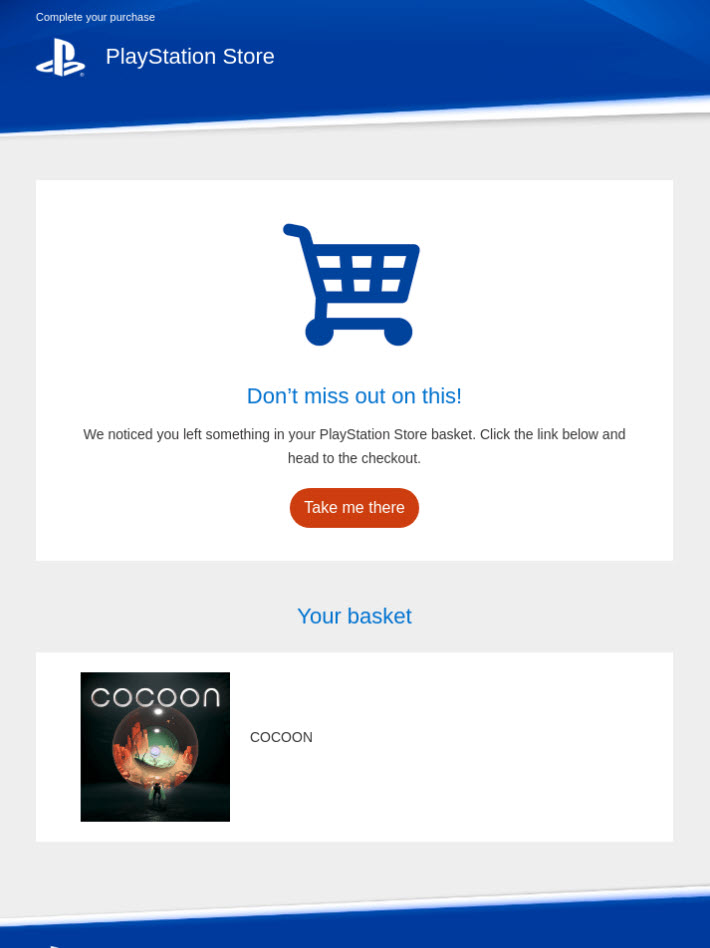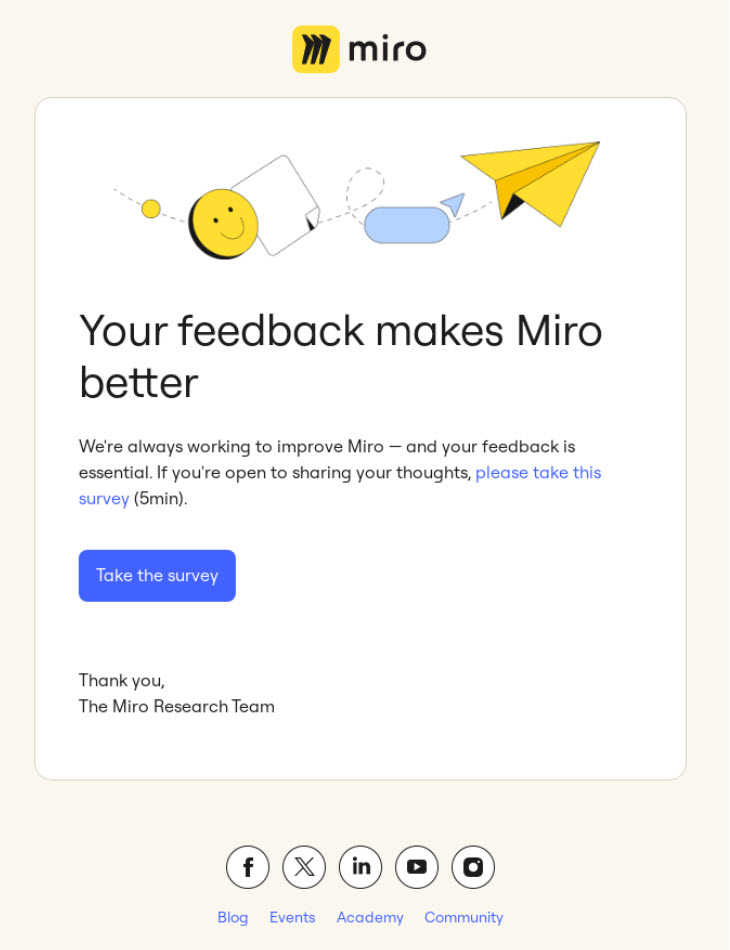
Since the invention of electronic mail (commonly known as email), people have been using the technology to send and receive important information from colleagues, humorous chain mail, and personal communications from friends and family.
Today, email is a major avenue for businesses to communicate with existing and potential customers. From welcome emails to reminders about abandoned carts, email keeps subscribers informed and engaged with the brands they love.
What is email marketing?
Email marketing is a marketing strategy that uses emails to generate measurable returns for your business.
Marketing emails differ in a few ways from a typical email you might send to a relative or coworker.
First, a marketing email is sent to a current or prospective customer. Second, while personal emails are often just relaying information, the goal of a marketing email is always to drive subscriber actions that benefit the business, such as signing up for an event or clicking through to a product page.
You’ll achieve your business goals by delivering value to your readers, often through engaging content, coupons, and exclusive offers.
Finally, while you may send out a personal email and move on immediately, marketing emails should be measured to see if readers are opening them and taking the desired action(s).
Advantages/Benefits of email marketing
One of the top benefits of email marketing is that it helps you to keep in touch with your customers. Whether a simple “Thank you for subscribing,” a cheery “Welcome on board,” or a sincere Happy Birthday email, email is the easiest and most effective way to let your customers know you value them. Customers love it when a business treats them as individuals.
That value should show in the emails you send, and the more value you provide to your customers, the more they’ll look forward to hearing from you. Getting them to engage with your call to action is more effortless when that happens.
Studies show that email marketing outperforms other digital marketing channels, including social media and paid search.
1. Boost engagement & loyalty
Email marketing is a powerful tool for boosting engagement and customer loyalty. By delivering personalized content and targeted email marketing campaigns, businesses can capture and keep the attention of recipients — driving higher open rates, click-through rates, and conversions.
In your search to boost engagement through email marketing, you’ll discover the best digital marketing tool to fit your needs includes the ability to automate email marketing campaigns. Automation allows your business to better tailor your customer’s experience with your marketing messages and gives you time back in your schedule.
Whether your user is extending their subscription or buying a new product, you can leverage email drip campaigns to engage customers during the renewal or new purchase process. Whenever a user leaves an unpurchased product in their cart, use email automation to send an abandoned cart email and let them know the product is still available for purchase.
2. Promote relevant content
Email marketing opens up a communication line with your subscribers, potential customers, and loyalists to receive content that keeps them up-to-date about what’s happening with your business. As you craft content, you’ll want to provide expert advice, promote a new product line, or share customer testimonials to lend credibility to your brand and reassure your clientele.
Remember, data is a friend to both your subscribers and your business. When you know where a customer fits into your email cycle, sending them content that’ll interest them and keep them engaged is easy. Email campaigns become especially handy when you are running a small business and have to be strategic about how you spend your time. Try targeting user segments based on which aspects of your service subscribers use most, recent purchases, or behaviors.
3. Help increase brand awareness
Email marketing is a great way to develop your brand identity because it gives you a direct line to customers and potential customers while showcasing your voice, style, and mission. You’ll have an edge over your competitors once you create valuable content for the customer.
Email marketing can also help you gauge subscriber and customer sentiment toward your brand. Use a survey to ask for feedback. Are customers happy with the content you’re providing? Would they like to learn something different?
Once you know what interests them, you’ll know how to provide valuable email content.
4. Boost sales
Email marketing offers equal opportunity to incite impulse purchases and drive careful consideration. Whatever your target audience looks like, you can use email marketing to encourage a first-time buyer to click “add to cart” or a long-time shopper to stay true to your brand.
For new customers, you might consider:
- Product overviews
- Expert opinions, awards, and customer testimonials
- Discounts and exclusive offers for first-time buyers
To shoot for a repeat customer, try:
- Sending follow-up emails featuring products similar to the purchased product or products bought in tandem
- Exclusive content about how to style/use a product (e.g., recipes, design recommendations, etc.)
- Create a special offer or discount for future purchases
What are the types of email marketing?
It’s important for businesses to choose the appropriate type of email marketing based on their goals, target audience, and the desired outcome of the campaign. Here are some common types:
- Promotional Emails: These emails promote specific products, services, or offers. They often include discounts, limited-time deals, or special promotions to encourage recipients to make a purchase.

- Welcome Emails: Sent to new subscribers or customers, welcome emails aim to introduce the brand, set expectations, and provide valuable information. They can include a warm greeting, a brief company overview, and a call to action to encourage further engagement.
- Newsletter Emails: Newsletters are regular emails sent to subscribers to provide updates, news, and valuable content. They can include industry insights, blog articles, product updates, or curated content to keep subscribers informed and engaged.
- Abandoned Cart Emails: These emails are triggered when a customer adds items to their cart but doesn’t complete the purchase. Abandoned cart emails aim to remind customers of their unfinished purchases, offer incentives, and encourage them to complete the transaction.

- Re-engagement Emails: Sent to inactive subscribers, re-engagement emails aim to win back their interest. They can include special offers, personalized recommendations, or surveys to understand their preferences better.
- Transactional Emails: These emails are triggered by specific actions or transactions, such as order confirmations, shipping notifications, or password resets. While primarily informative, transactional emails can also include personalized recommendations or cross-sell opportunities.
- Event Invitation Emails: Emails sent to invite subscribers to events, webinars, or workshops, these emails provide details about the event, registration links, and any special offers or incentives for attending.
- Feedback or Survey Emails: These emails are sent to gather feedback from customers or subscribers. They can include surveys, polls, or feedback forms to collect valuable insights and improve the customer experience.

Key email marketing stats and cost-effectiveness
Email marketing is relatively cheap. Whether you do it yourself or through an email marketing provider, marketing to hundreds of customers via email will cost you peanuts compared to other advertising channels.
With email marketing, you can send targeted emails based on what you know about your customers – such as likes, dislikes, content preferences, age, location, and buying patterns.
A few key stats:
→ Email marketing has an average return of $36 for every dollar spent, so investing in email marketing can have some serious payoffs.
→ On average, abandoned cart emails have a 43.76% open rate, an 8.76% click-through rate, and a conversion rate of 10.7%
→ According to a 2022 Radicati Group study, there will be more than 4.48 billion email users by the end of 2024. In other words, over half of the people on this planet use email right now.
That sounds crazy, doesn’t it? But think about it: whenever you register with a new website or sign up for an account, you must have an email address. Yes, you can log in with a social media account like Facebook, but you still need an email address to sign up for Facebook.
Email is still the dominant form of communication, and smart businesses use email every day to turn prospects into customers.
What’s more, email results are easy to measure. Constant Contact customers have real-time access to metrics like open rates, clicks, bounces, forwards, social shares and more.
Expert tips to know about email marketing
1. Choose an email marketing service provider
If you’re serious about email marketing, you must work with an email marketing service provider. Working with a provider is the only way your business can leverage email marketing to deliver messages to large groups of contacts or subscribers effectively. You’ll also benefit from professional email templates, automation tools to help you expand, easy ways to manage and grow your email list, and tracking features showing how customers respond to your emails.
2. Gather contacts for your email marketing list
Most businesses have some existing contacts when they start a mailing list. Think of the customers and people you already have a business relationship with. Maybe they’re contacts you email regularly, or you could start with a few supportive friends and family members.
Don’t get discouraged, even if you’re building an email list completely from scratch. Start by putting a paper sign-up sheet near your register, adding an online sign-up form to your website, and encouraging your social media followers and loyal customers to sign up.
Whatever you do, don’t purchase an email list. Email marketing management is all about building and nurturing relationships; connecting with a smaller list of quality contacts is more impactful than blasting out emails to contacts who haven’t consented to receive marketing emails from your business.
3. Set up your welcome email
The first email a new subscriber should receive is the welcome email. Use your welcome emails to help your business build a relationship with your audience. Connect them to your brand voice, provide valuable content, and offer exclusive deals to set the tone for future customer experiences.
Consider automating your welcome emails. New subscribers will be added to your welcome email list and receive content in a timely manner.
4. Write persuasive messages
This tends to be one of the scariest steps for business owners. You don’t want to sound too sales-y or push too hard to get potential customers to buy your products, but at the same time, you want to convert them into paying customers.
When thinking of email marketing campaign ideas, it helps to follow a repeatable process and break your message down into three crucial sections:
- Headline: What are you offering?
- Message Body: How will it help the reader?
- Call to action: What should they do next?
This simple three-step formula helps you stay focused so you can write more effective messages.
5. Use personalization in subject lines
The subject line of your email is one of the first impressions someone gets from your brand, especially when you’re sending them an email for the first time. Using what you already know about the customer should be your first priority while sending email marketing campaigns.
Your subject line should be short and snappy — around 40 characters.
You can draw attention by asking a compelling question, including a deadline to increase urgency, or teasing your message.
6. Focus on customers, not your products
Have you ever received a marketing email that didn’t feel relevant enough? Yeah, that can get a little annoying.
An email cluttered with products or information that doesn’t provide the subscriber with value will cause them to lose interest in your email marketing and unsubscribe from your email list if the issue persists.
When you’re dividing your readers into segments, make sure to remember what stage of the customer lifecycle they’re in. For example, they’re a new customer or someone who’s left something behind in their cart.
A little extra effort when segmenting emails can go a long way.
7. Preview and test before you send
Make sure the content you’re sending is grammatically correct and free of styling errors. Use the preview function in your email marketing software to view your content, check links and promo codes, and send test emails. Catch errors when it counts so you can provide a high quality email experience for your subscribers.
8. Track your results
Email marketing doesn’t end with a send. You will want to track your open rate, click-through rate, unsubscribe rates, etc., and work to improve over time.
You need to know which metrics will help you create a perfect email marketing strategy. These aren’t the only indicators of optimal email performance, but they’re a good start. Remember to A/B test different emails with different segments to see what works and what doesn’t.
Learning from these metrics can help you define your goals and answer important questions like, “Are customers opening my emails?”, “Are they clicking?”, and “Do they care at all?”
Knowing what works and what doesn’t help you save time, effort, and money.
Start sending your emails with confidence!
Create an email marketing strategy that fits within your budget and helps you to attract new customers. Take the first step by crafting a welcome email to introduce your brand and begin building a relationship with your subscribers.
Frequently Asked Questions (FAQ)
How should I measure the success of my email marketing campaign?
While you might be inclined to focus on open rates, it’s not the only metric to look to when you’re measuring the success of your email marketing campaigns. Look to click-through rates and conversions, in addition to open rates, to help you determine if your email marketing campaigns were successful.
Learn more: Email Marketing Metrics: Measuring Success Beyond Open Rate
How do I make sure my marketing emails avoid ending up in the spam folder?
A couple of factors contribute to a high rate of email deliverability. From sender score to subject lines, you want to make sure your marketing emails are making it into the inbox and staying out of the spam folder.
Learn more: What is Email Deliverability?
What’s the best structure for a marketing email?
Typically every great marketing email has the following elements:
- A snappy subject line
- Informative preheader text
- An eye-catching header image or graphic
- Company logo
- Body text
- Additional graphics or images
- A call to action with a clickable link
Find out more about the anatomy of an email on our blog and download our free ebook “How to Create the Perfect Email”.





